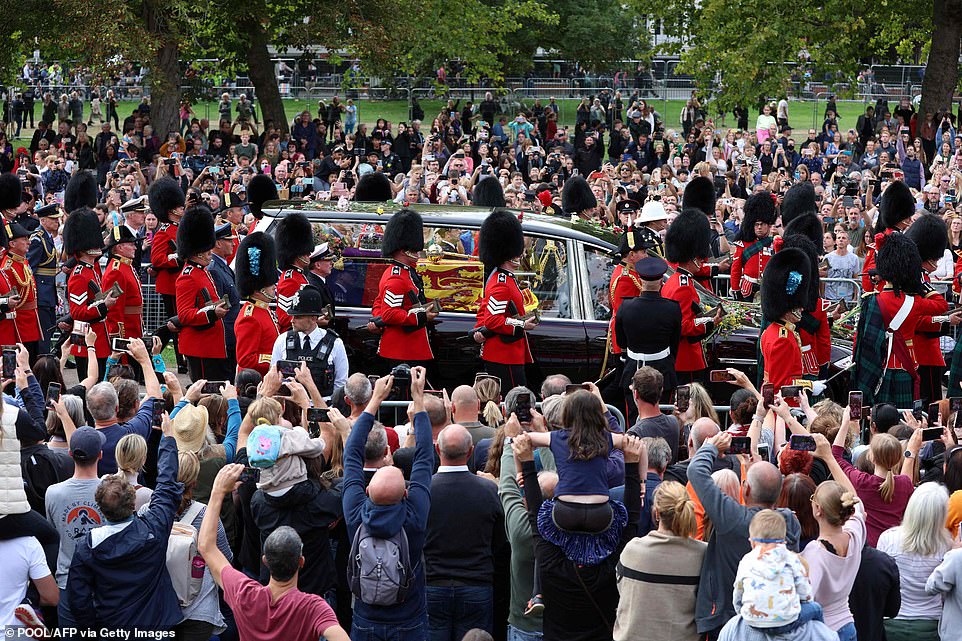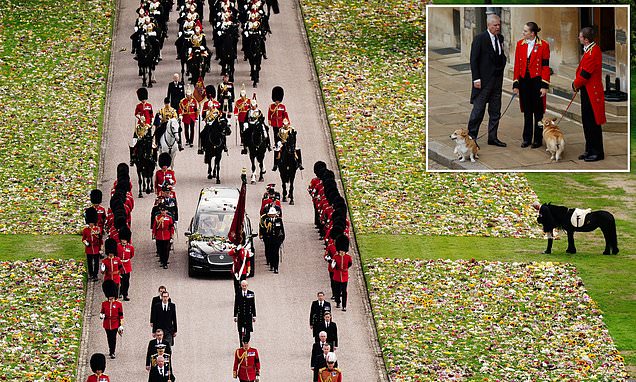Emma, the Queen’s beloved fell pony, came out to say goodbye to the monarch today as the royal hearse pulled up to Windsor.
As the Queen’s body arrived at Windsor Castle this afternoon, Emma, a black pony, was seen standing by the side of the road.
The Queen’s former stud groom and manager to Her Majesty accompanied her. Terry Pendry, the current queen, has been in charge for the last 25 years.
Prior to her Committal Service, the beloved Corgis of the monarch made an appearance as well.
Prince Andrew, 62, paid a visit to the two animals, who were accompanied by two aides, as he arrived at Windsor Castle ahead of this afternoon’s ceremony, which will see the Queen’s coffin buried amidst her close family.
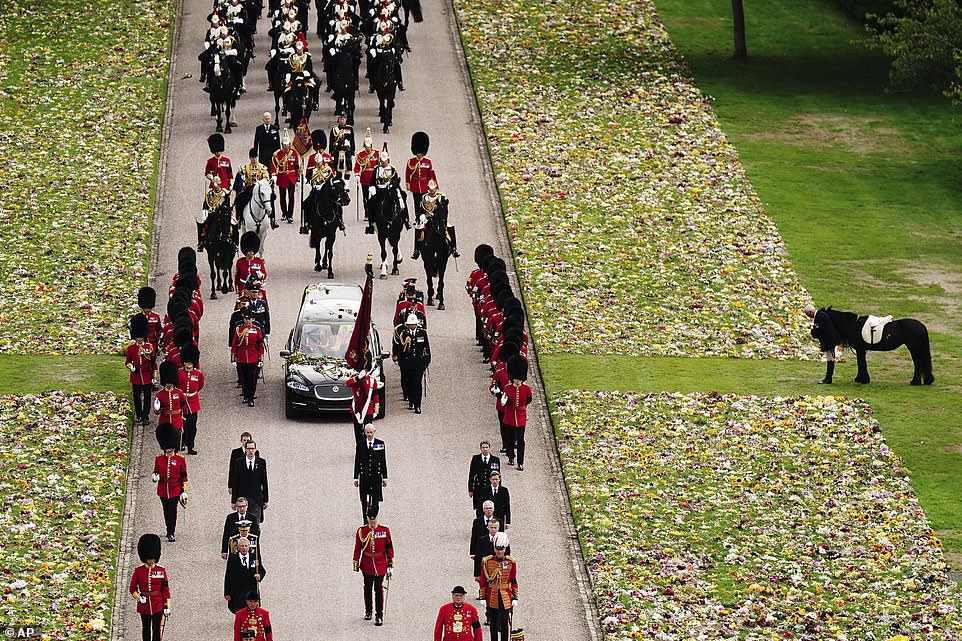
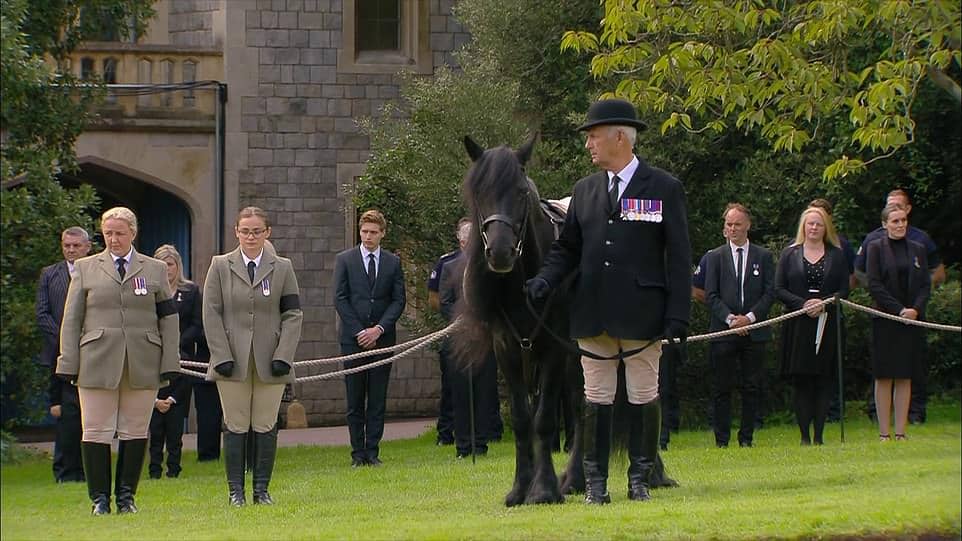
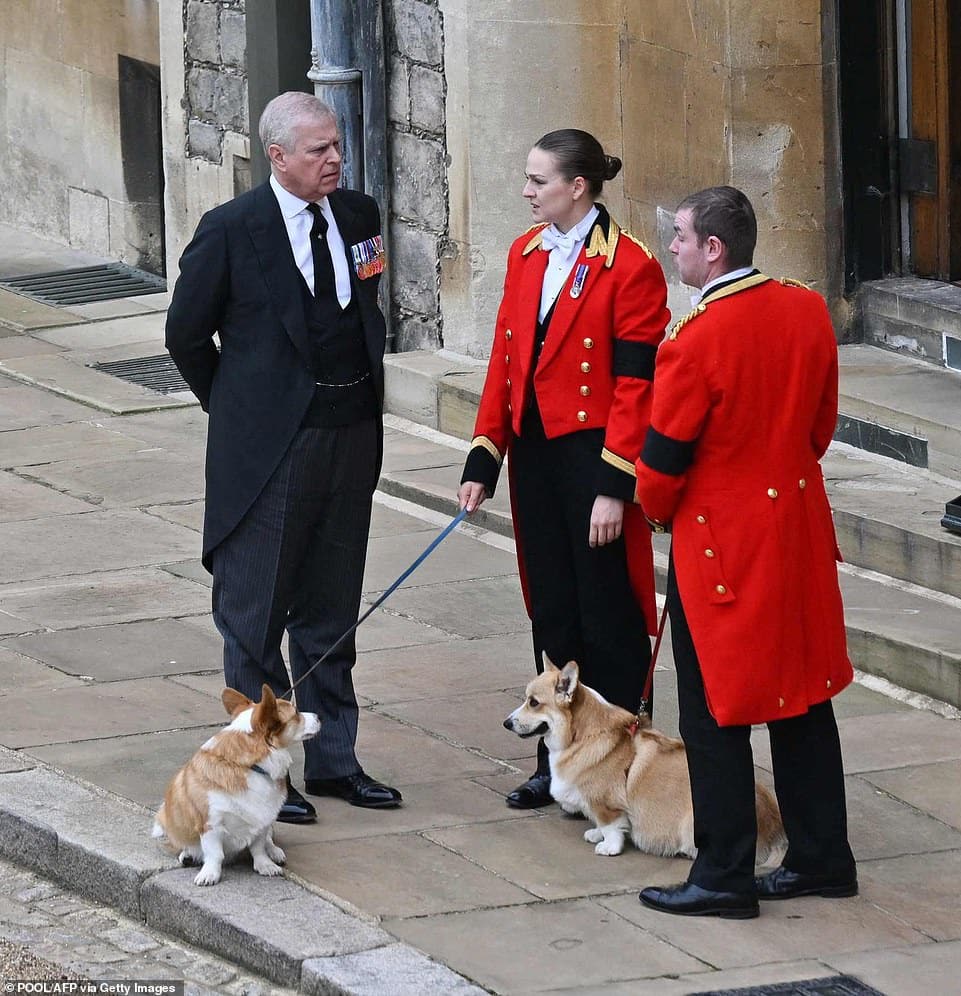
Terry Pendry and Emma, the monarch’s favorite fell pony, were seen waiting by the cortege as the monarch’s body arrived in Windsor.
When the hearse passed Terry, he bowed, and Emma was by his side for the touching scene.
The Royal Groom stated that Emma “has been a wonderful servant to Her Majesty and is still going strong at the age of 24” in his speech from 2020.
The monarch’s final two Corgis could be seen standing quietly on the side of Windsor Castle, being led by two royal aides who had them on a leash.
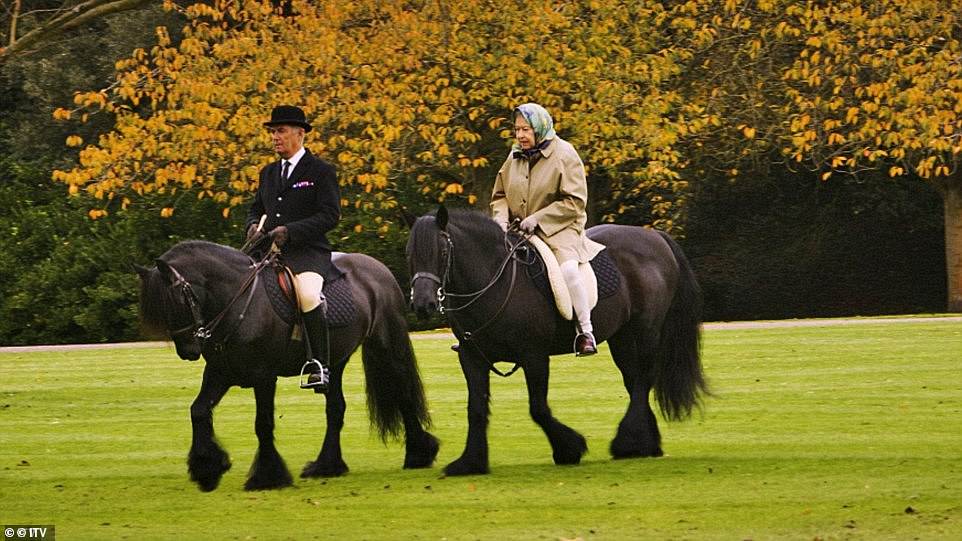
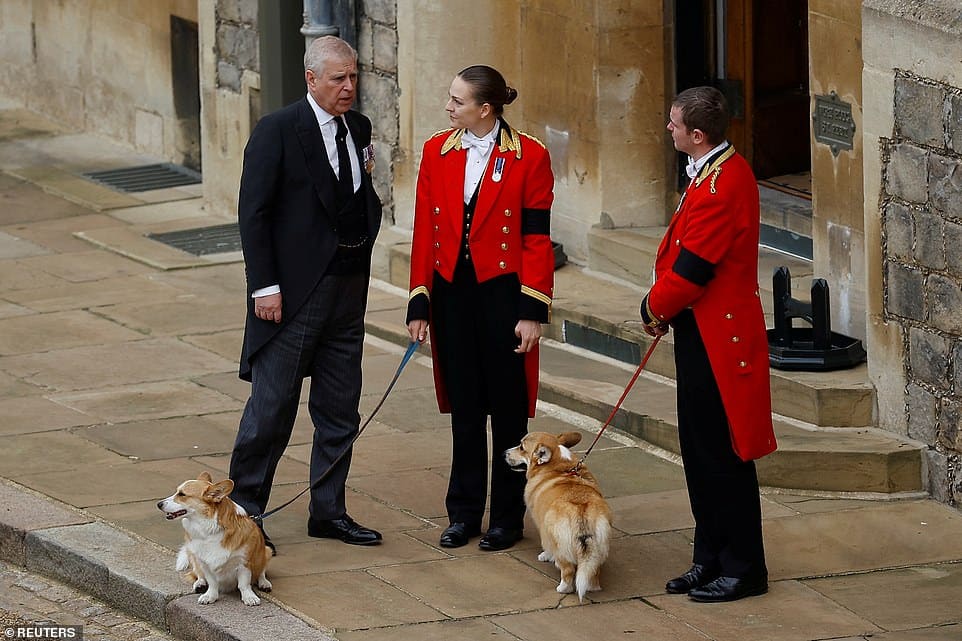
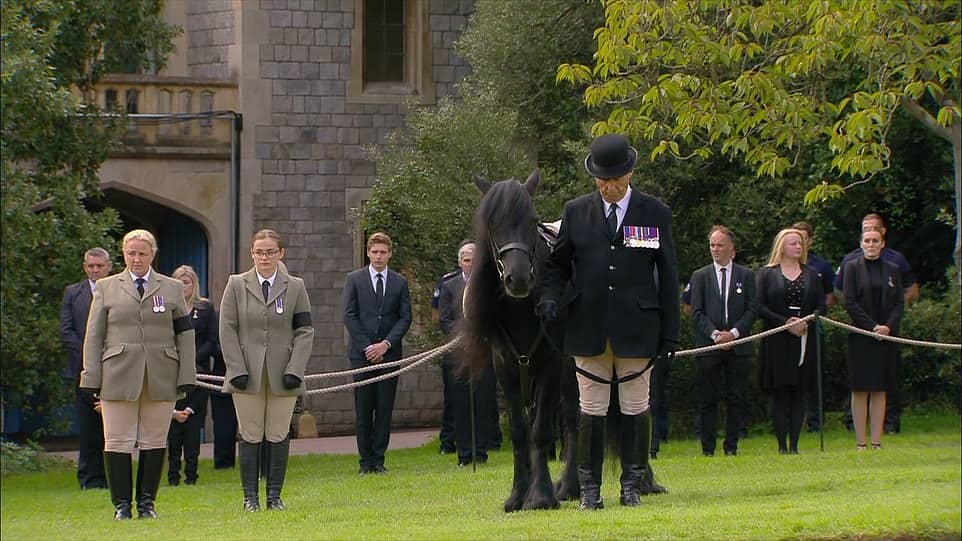
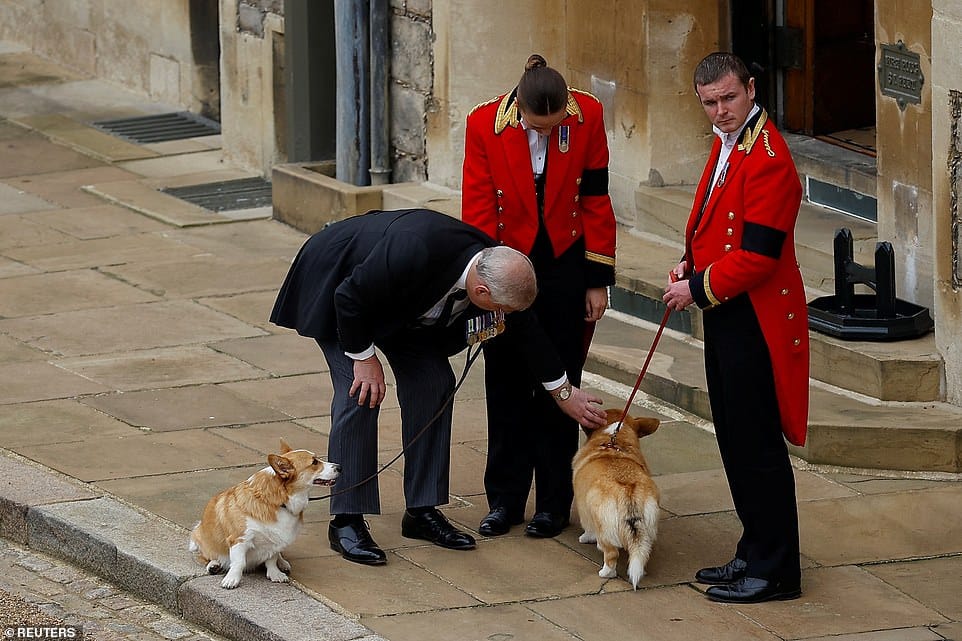
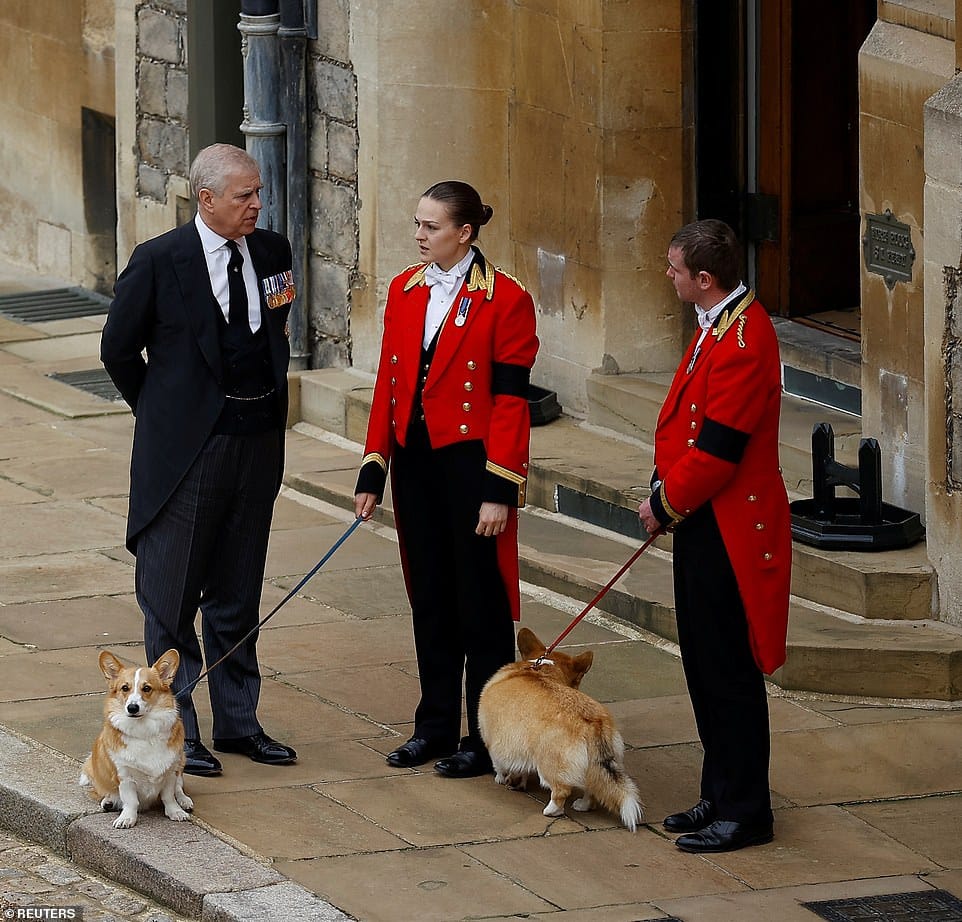
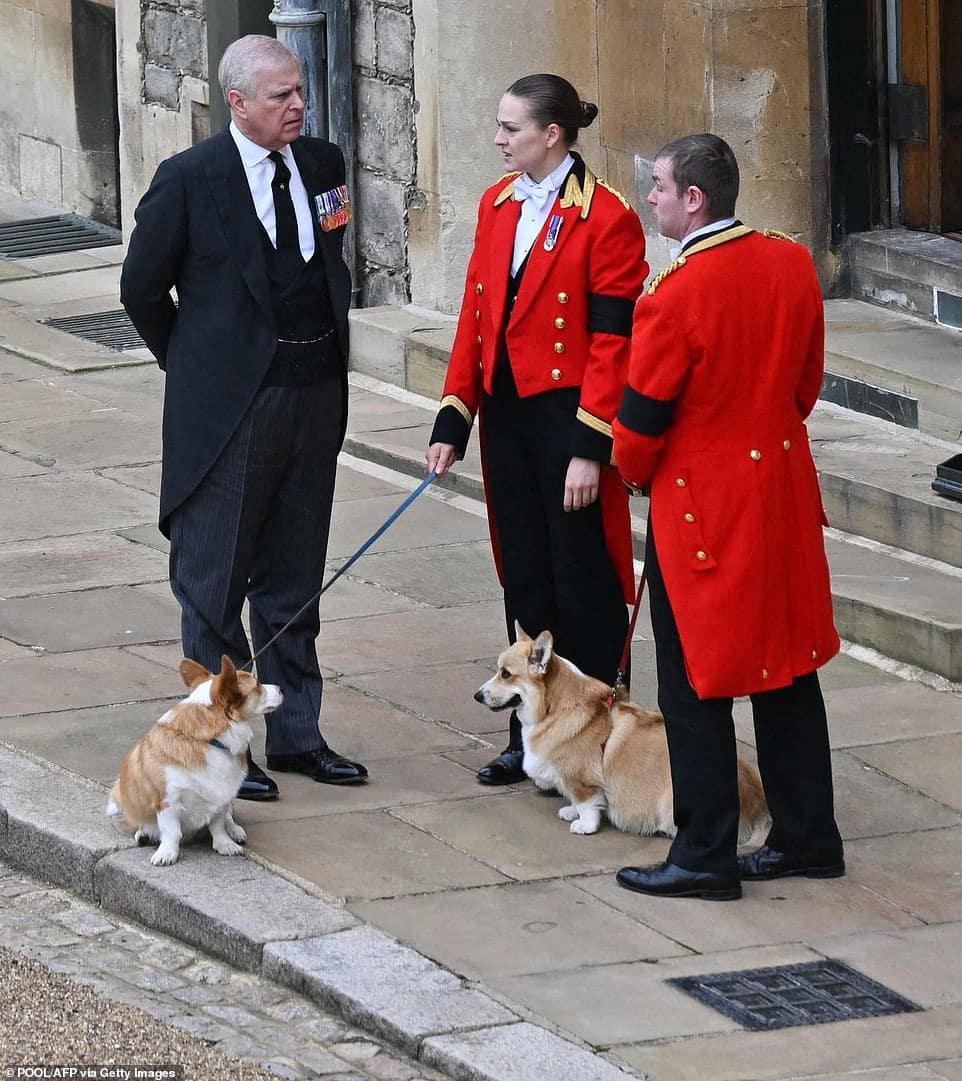
Before returning to today’s solemn proceedings, Prince Andrew was seen speaking to the aides and petting the Corgis sympathetically.
The BBC confirmed that Andrew and Sarah Ferguson, his ex-wife, would be taking care of the Corgis at Royal Lodge in Windsor, where they share a home.
Following the passing of the Duke of Edinburgh, Andrew, and his daughters Princess Beatrice and Eugenie gave the animals to the Queen as a gift.
The Queen was welcomed with a carpet of flowers as mourners entered St. George’s Chapel for the Queen’s Committal service, where she will be eternally united with her beloved husband Prince Philip.
A flower-covered hearse carrying the late sovereign’s coffin slowly made its way towards her Berkshire castle, where she spent the majority of her last years before passing away at Balmoral 11 days ago, as tens of thousands of spectators lined The Long Walk and cheered.
However, mourners in Windsor have been instructed to leave their bouquets by the “grass moat” close to Windsor castle rather than throwing flowers at the hearse carrying the Queen’s coffin. The flowers could frighten horses, raise safety concerns, pose a tripping hazard, and be challenging to clean up if they are pressed into the ground, according to security officials and event organizers.
Her Majesty will be interred with her late husband Prince Philip in the King George VI Memorial Chapel following the last component of her funeral that is open to the public. This evening, the King and other members of the royal family will attend a private funeral service.
In a service attended by about 800 people this afternoon, the royal family will bid farewell to their cherished matriarch in the Gothic chapel on the grounds of Windsor Castle.
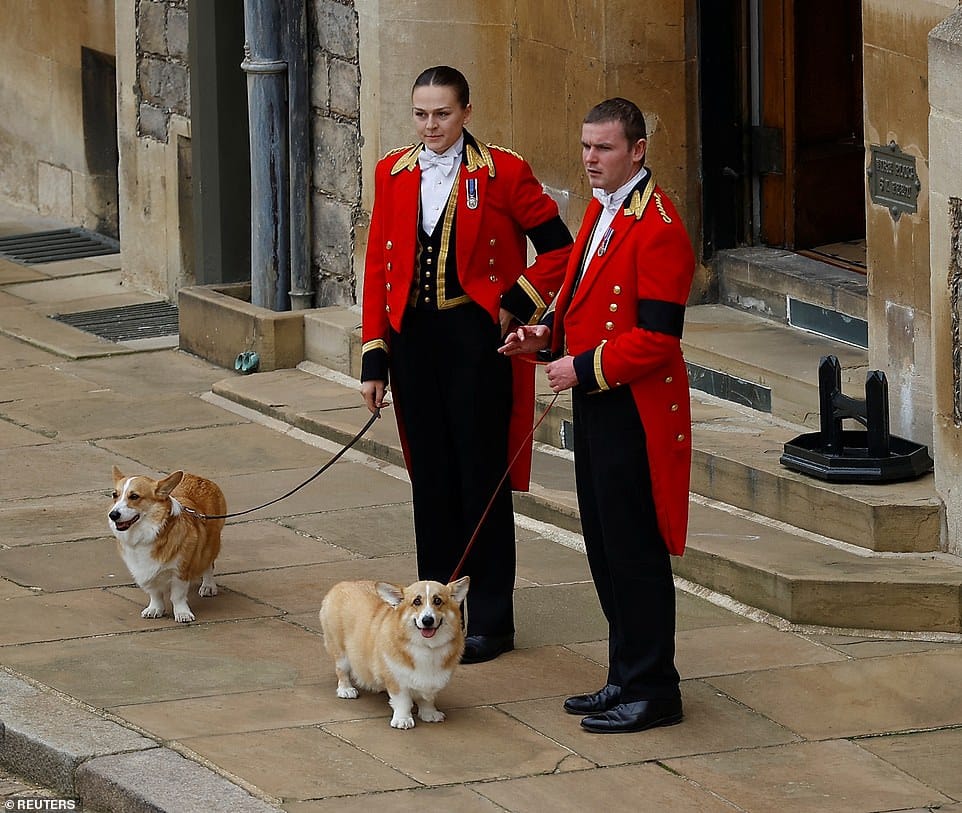
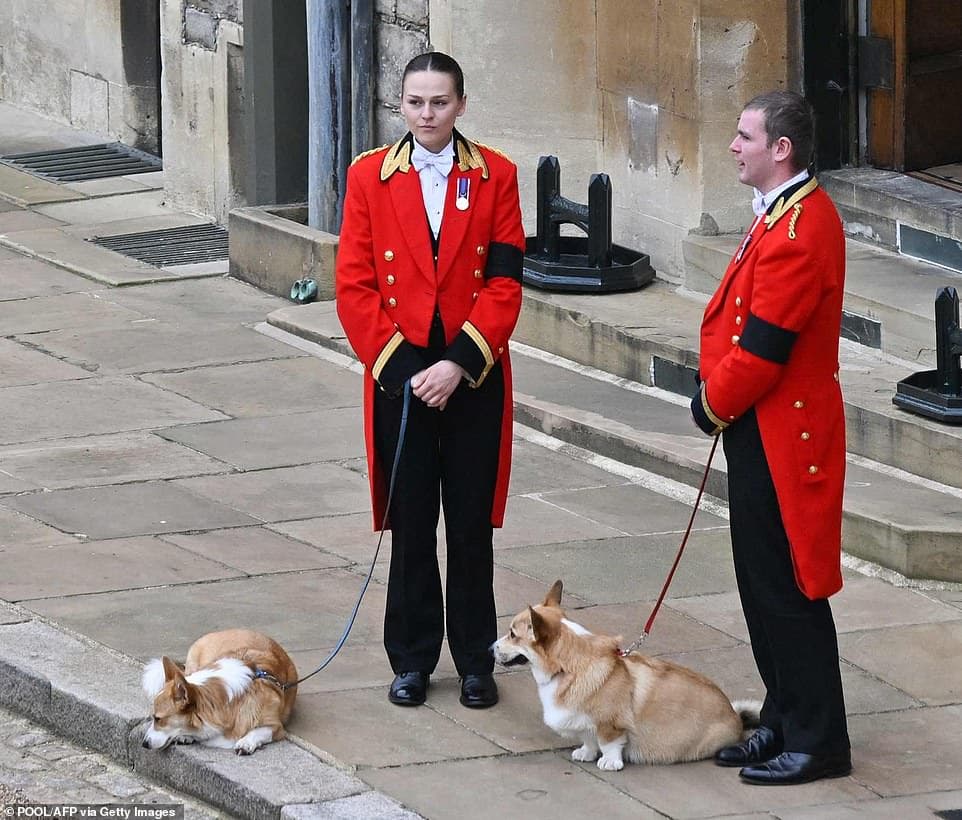
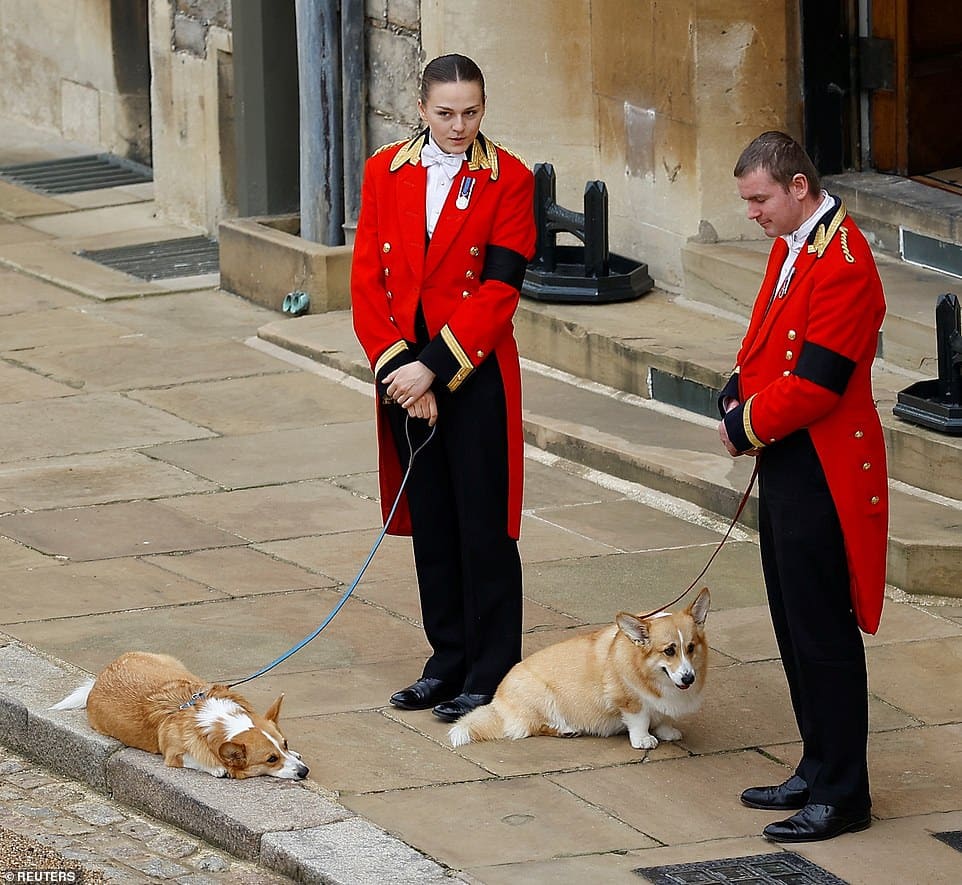
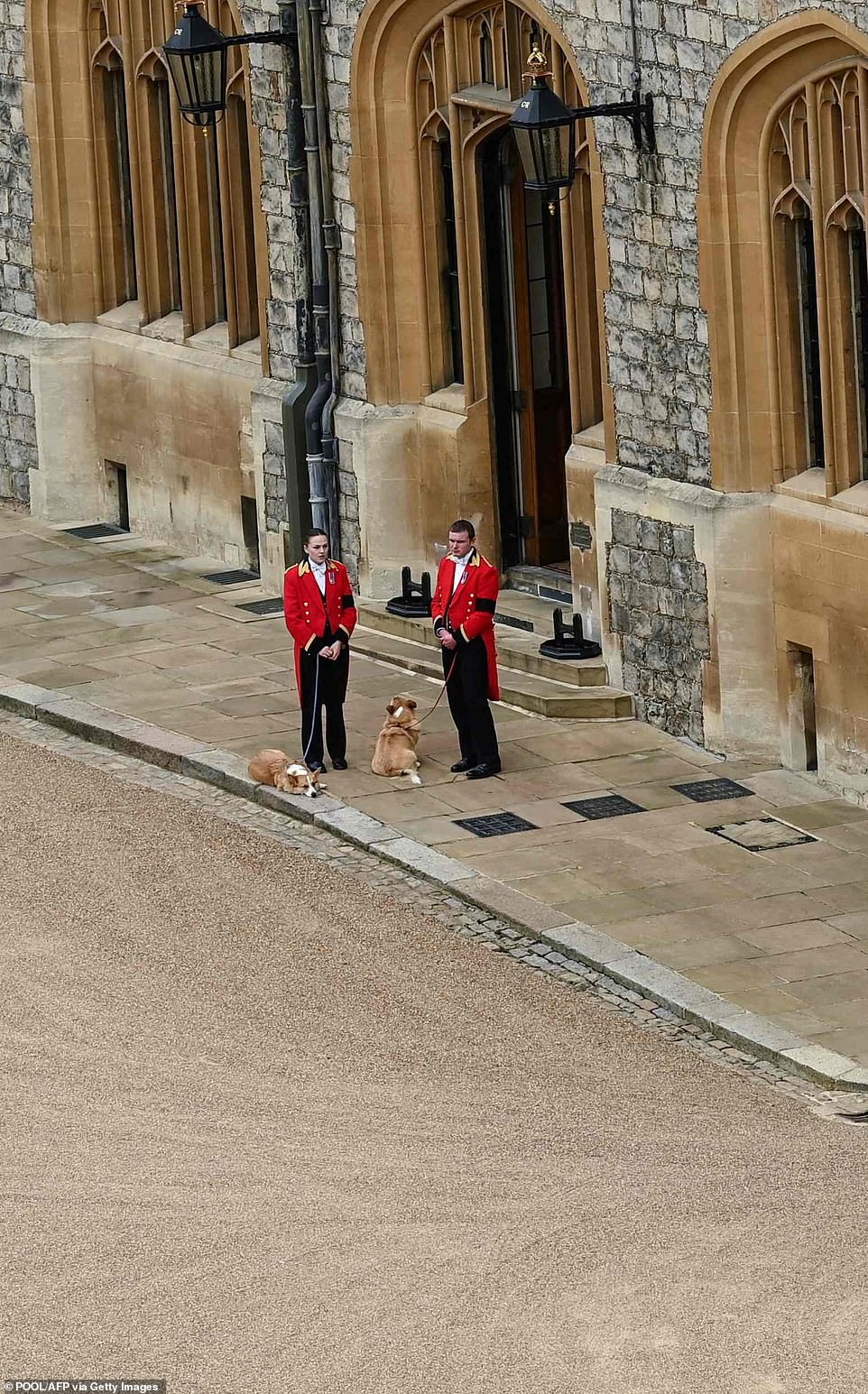
As the state hearse transporting the Queen’s coffin made its final turn onto the Long Walk, a hush fell over the crowds of mourners.
As the drumming in the procession grew louder, the crowds of people of all ages that flanked the Long Walk became quiet. People struggled to get a glimpse of the scene as children were lifted on adults’ shoulders and camera phones were raised in the air.
The late monarch’s closest family and friends, as well as her current and former household staff, are anticipated to attend the congregation.
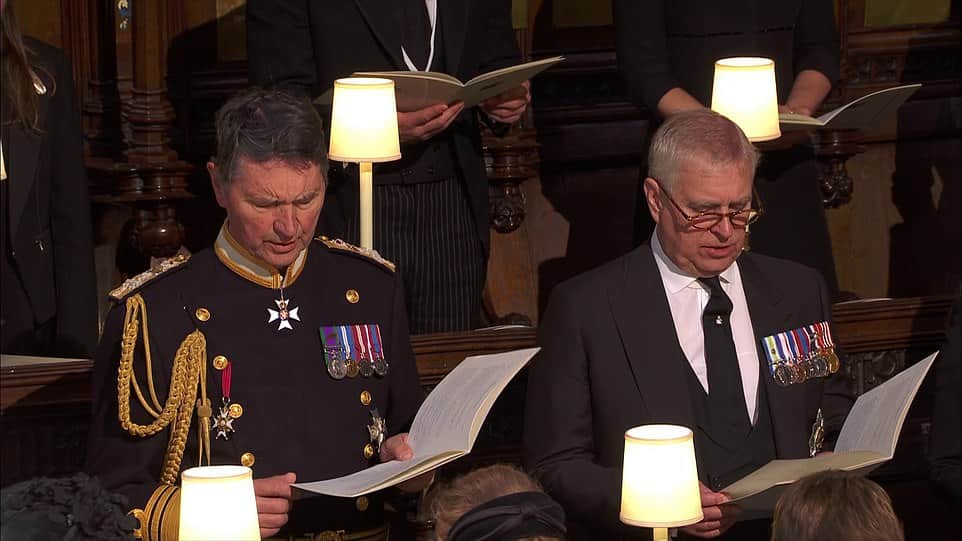
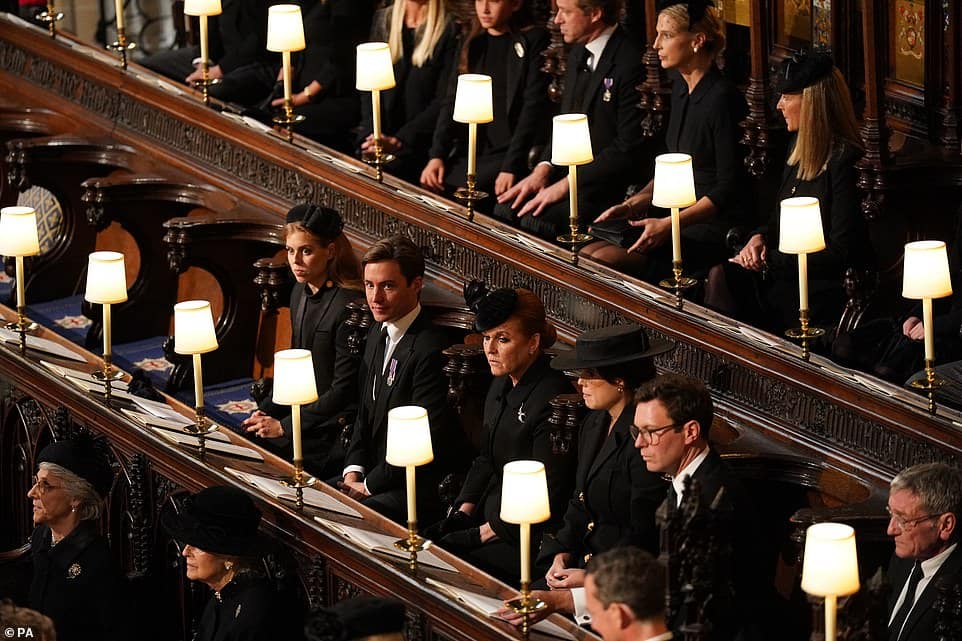
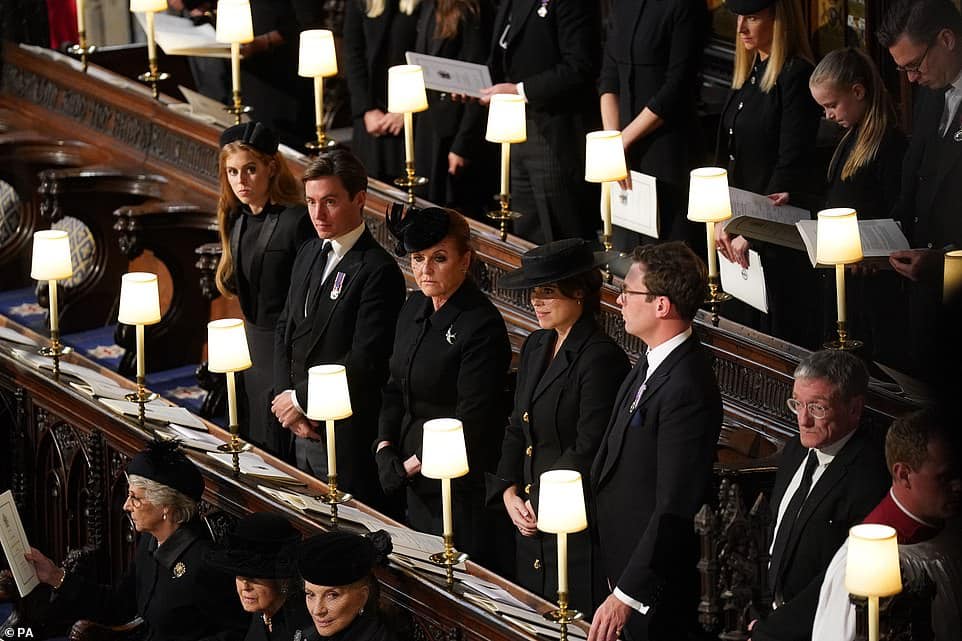
Near the chapel’s entrance is a wreath from Number 10 that is inscribed with the words “For a lifetime of devotion and duty we offer our deep and sincere gratitude.” Prime Minister Liz Truss signed the wreath.
The area surrounding the chapel is covered in bouquets of red roses, pink lilies, potted plants, and wreaths from foreign royals, among other types of flowers.
An arrangement of white flowers is in full bloom inside one of the chapel’s main entrances.
Lilies, dahlias, roses, and other flowers and greenery from Home Park were also used in the chapel’s decorations.
The service, which has a strong tradition running through it, was discussed with the Queen over a period of time, and she selected all of the prayers and hymns with the exception of one.
One hymn was left up for selection at the time by the Queen, and Westminster Abbey, an adaptation of the Alleluyas from Purcell’s O God, Thou art my God, was chosen after a discussion between the King and the Dean of Windsor David Conner.
